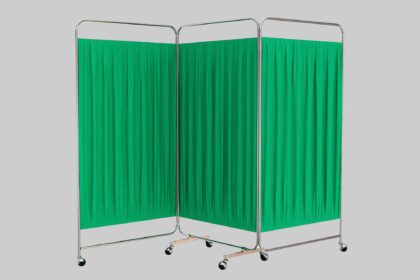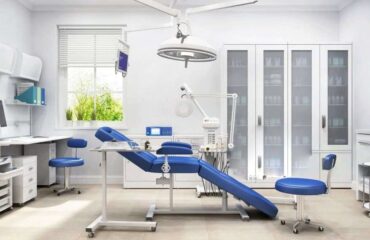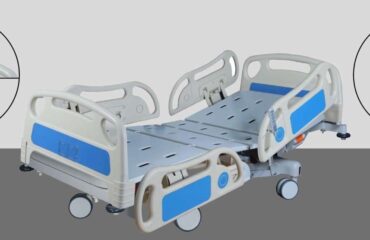
Hospital bedside screens, also known as bedside privacy screens or hospital partitions, are used in healthcare settings to provide privacy, separation, and infection control for patients. They come in various forms, including:
Curtain Screens – Mounted on ceiling tracks or rolling frames, these fabric or disposable curtains provide privacy between beds in shared rooms.
Folding Screens – Portable, accordion-style panels that can be moved and adjusted as needed.
Digital Bedside Screens – Interactive screens mounted near hospital beds that provide entertainment, patient education, and communication with medical staff.
Glass or Plastic Partitions – Often used in intensive care units (ICUs) or during pandemics to reduce the spread of infections.
What are the Types of Hospital Bedside Screens?
Privacy Screens
Used to provide visual separation between patients in shared hospital rooms.
- Curtain Screens – Ceiling-mounted or wall-mounted fabric curtains, often made of antimicrobial materials.
- Folding Screens – Portable, accordion-style screens that can be easily moved and adjusted.
- Mobile Panel Screens – Rigid, wheeled partitions made of plastic, metal, or glass for easy repositioning.
- Retractable Screens – Roll-up or sliding panels that can be extended when needed and retracted when not in use.
Digital Bedside Screens
Used for patient communication, monitoring, and entertainment at the bedside.
- Patient Engagement Screens – Interactive touchscreens for accessing medical records, meal ordering, or entertainment.
- Vital Signs Monitoring Screens – Displays connected to medical devices that show real-time patient data.
- Telemedicine Screens – Used for remote doctor consultations and video calls.
Infection Control Screens
Designed to reduce contamination and maintain hygiene in hospital settings.
- Glass or Acrylic Partitions – Easy-to-clean barriers used in ICUs or isolation wards.
- Disposable Privacy Curtains – Single-use antimicrobial curtains that can be replaced to prevent cross-contamination.
What Are the Uses of a Hospital Bedside Screen?
Hospital bedside screens have various uses aimed at improving patient care, comfort, and safety. Here are the primary uses:
Privacy
- Patient Dignity: Provides visual privacy for patients during medical examinations, procedures, or personal activities like dressing.
- Confidentiality: Helps maintain patient confidentiality during consultations or discussions.
Infection Control
- Barrier Protection: Limits the spread of infections by creating physical barriers between patients.
- Isolation: Useful in isolation rooms or during outbreaks to reduce cross-contamination.
Patient Engagement and Education
- Interactive Communication: Digital screens allow patients to access information about their care plans, watch educational videos, or communicate with healthcare staff.
- Entertainment: Offers TV, movies, internet access, and games to improve patient morale and comfort.
Safety and Monitoring
- Vital Signs Display: Screens connected to monitoring equipment display vital signs and other critical information in real-time.
- Telemedicine: Facilitates remote consultations with specialists, reducing the need for patient transport.
Environment Management
- Noise Reduction: Screens can act as sound barriers, creating a quieter environment conducive to healing.
- Visual Comfort: Helps reduce visual clutter in busy hospital settings, contributing to a more calming environment.
Operational Efficiency
- Easier Cleaning: Mobile or disposable screens can be cleaned or replaced easily, enhancing hygiene.
- Flexible Space Management: Portable screens allow quick reconfiguration of spaces based on patient needs.
Role of Hospital Bedside Screen in Health care?
Hospital bedside screens play a crucial role in patient care, privacy, and infection control in healthcare settings. Their functions contribute to better patient experiences, improved medical efficiency, and enhanced safety. Here’s how they impact healthcare:
Ensuring Patient Privacy & Dignity
- Helps maintain patient confidentiality during medical consultations, examinations, or treatments.
- Provides a comfortable and private environment for patients in shared rooms.
- Allows patients to maintain dignity during dressing, personal hygiene, or medical procedures.
Infection Control & Hygiene Management
- Acts as a physical barrier to reduce the spread of airborne infections, especially in shared hospital wards.
- Easy to clean and disinfect, helping maintain hospital hygiene standards.
- Disposable privacy curtains reduce the risk of cross-contamination between patients.
Supporting Patient Engagement & Communication
- Digital bedside screens provide access to patient medical records, test results, and treatment plans.
- Facilitates telemedicine by allowing remote consultations with doctors and specialists.
- Helps patients stay informed about their medications, procedures, and hospital services.
Enhancing Patient Comfort & Well-being
- Offers entertainment options like TV, movies, music, and internet access to reduce stress and boredom.
- Reduces noise and visual distractions, creating a more restful environment for recovery.
- Contributes to mental well-being by giving patients a sense of control over their environment.
Improving Safety & Monitoring
- Integrated bedside monitors display real-time vital signs and patient data for quick medical assessments.
- Helps staff monitor high-risk patients while maintaining their privacy.
- Reduces accidental exposure to other patients during treatments.
Flexible Space Management
- Mobile and retractable screens help adjust hospital spaces based on patient needs.
- Used in emergency rooms, ICUs, and wards to separate patients efficiently.
- Enhances workflow for healthcare providers by allowing quick modifications to patient areas.
Conclusion
Hospital bedside screens are essential for privacy, infection control, patient engagement, and medical efficiency. Whether through traditional privacy screens or digital interactive panels, they significantly improve patient care and hospital operations.


